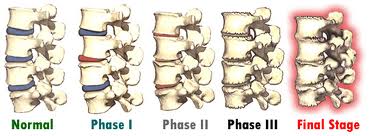Functional medicine is a science-based and natural way to bring people back to a healthier state. Functional medicine is patient-centered medical healing. However, instead of looking at and treating health problems as isolated illnesses and diseases, functional medicine treats individuals who have a number of bodily symptoms, imbalances and dysfunctions.

Diseases such as diabetes, cancer and fibromyalgia may appear to just be diseases. However, according to functional medicine, the causes of these disease lie in an altered physiology that is the result of imbalances and dysfunctions within the body. Almost always, the cause of a disease and it’s symptom are related to an underlying dysfunction or imbalance in the body’s systems.
If you were to visit with a doctor, conventional medicine is just going to treat the disease or illness. Rarely will treatment with conventional medicine lead to long-term relief and an improved and healthier lifestyle. With functional medicine, the underlying cause is identified and treated. Because of this, the patient has a much better chance of improving their health. By using scientific principles, functional medicine treatment is able to use advanced diagnostic testing and treatments other than prescription medications and surgery to restore balance to the body.
The overall goal of functional medicine? To help ensure a patient’s lifelong, optimal health.
How Functional Medicine is Filling the Gaps in Health Care
It probably comes as no surprise that today’s health care system has gaps. Today’s health care system is in trouble because it follows a medical management model. This medical management model works well when it comes to acute health problems. When it comes to chronic health problems, today’s conventional medicine is much less successful.
If you have a heart attack, pneumonia or need life-saving surgery, the quick-thinking used by doctors in modern medicine is something that we are all very thankful for. Life-saving technology, surgery and antibiotics are necessary in certain instances. We should all be very grateful for these interventions should we ever find ourselves in a serious medical emergency or in need of antibiotics to cure an infection.
However, conventional medicine often quickly reaches for medications, surgery and other acute treatment options when another approach is needed. When it comes to those with chronic, debilitating ailments — including heart disease, diabetes or arthritis, a different approach is needed. This is where functional medicine comes into play.
The Functional Medicine Approach to Healing:
To help alleviate chronic medical conditions, the functional medicine approach is grounded in two scientific principles.
- Add what is lacking in the body to help bring it’s physiology back to an optimal state of functioning.
- Remove anything that impedes the body from moving forward to a goal of optimal physiology.
In short, the goals of functional medicine is to find a natural approach to bringing the body back to a healthy state. In order for the body to be brought back to a healthy state, functional medicine identifies the reasons why the body is malfunctioning. Functional medicine addresses those issues in a way that is appropriate for each individual patient.
In many cases, functional medicine practitioners will use advanced laboratory testing to help identify the root causes (or multiple cases) of a patient’s health problems. Listening to a patient’s symptoms and asking questions of their food choices, activities and lifestyle can also be very helpful in helping a functional medicine practitioner to determine the cause(s) of a patient’s chronic pain.
As far as treatment goes, functional medicine practitioners use a combination of natural agents, nutrition changes, lifestyle changes, and counseling. Natural agents can include supplements, homeopathics, herbs and nutraceuticals. Education also plays an important role in returning a patient’s physiology back to an optimal state. Education helps to empower patients to take charge of their own health. When patients are in charge of their own health and well-being, there is likely going to be much greater success when it comes to treatment.
Functional Medicine and Treating Symptoms vs. Treating the Person
In today’s conventional medicine world, medication is used to get rid of patient’s symptoms. In many cases, the symptoms return when a patient stops using the medications. For example, think of medications used to treat arthritis. When a patient stops taking their medications, they are likely going to experience the pain of arthritis all over again.
This is where functional medicine is different. Instead of just masking the problem with medication, function medicine aims at restoring the body’s natural function. While functional medicine practitioners may prescribe pharmaceuticals, these medications are only prescribed to move the patient in the right direction. This is so the patient will not always be dependent on prescription medications. For instance, conventional medicine doctors would typically prescribe a medication like Prilosec for treatment of acid reflux or heartburn. As soon as the patient stops taking this medication, their symptoms will return. On the other hand, a functional medicine doctor may discover that the patient’s heartburn is actually caused by a bacteria. By treating the bacteria and removing it from the body, the heartburn could very well be put to a permanent end.
It is important to realize that with functional medicine, treatment may vary greatly from patient to patient. Another important thing to remember about functional medicine is that is it based in listening to the patient. By listening to the patient, functional medicine practitioners are able to make an accurate diagnosis.
Functional Medicine vs. Conventional Medicine




















